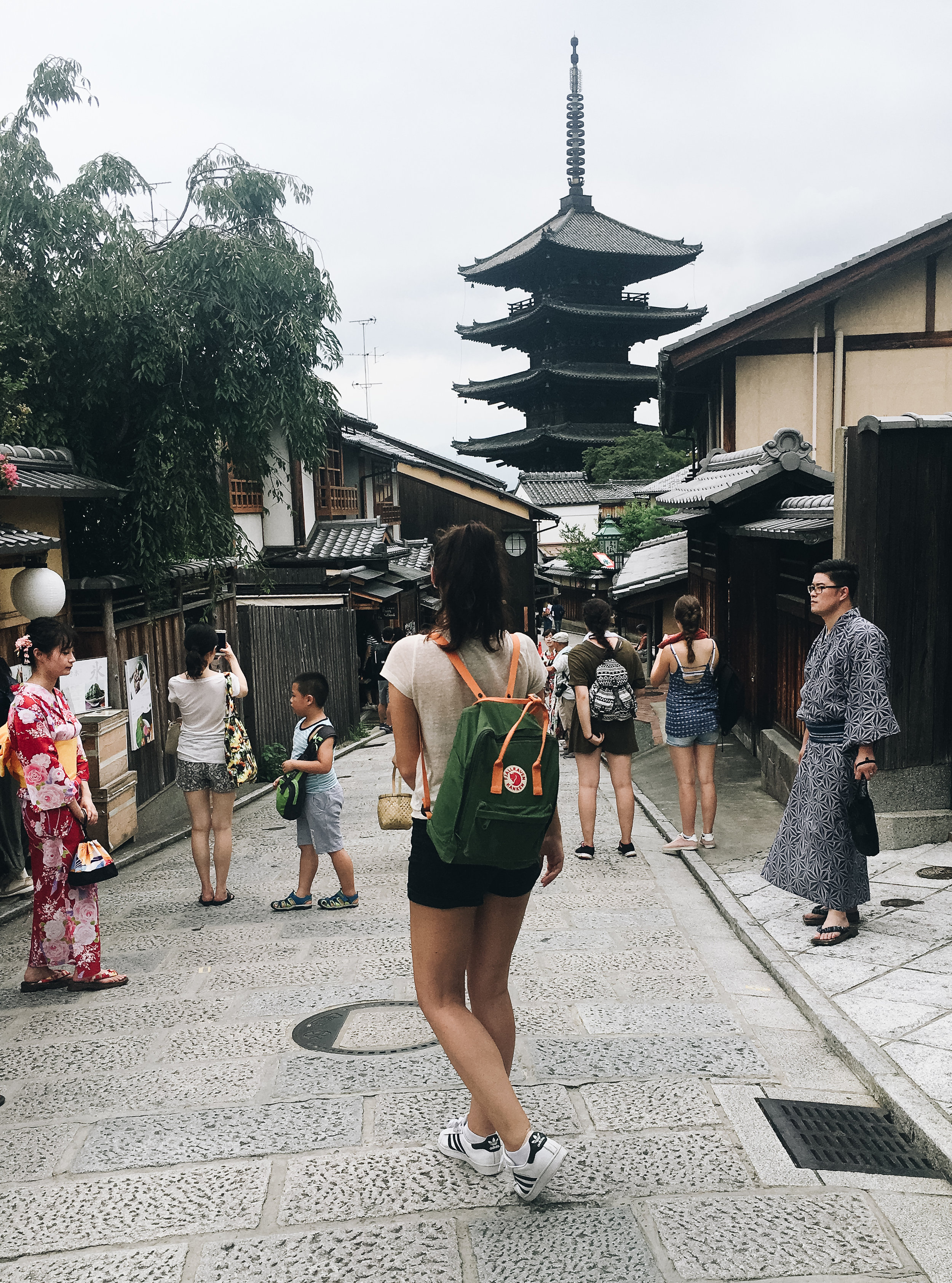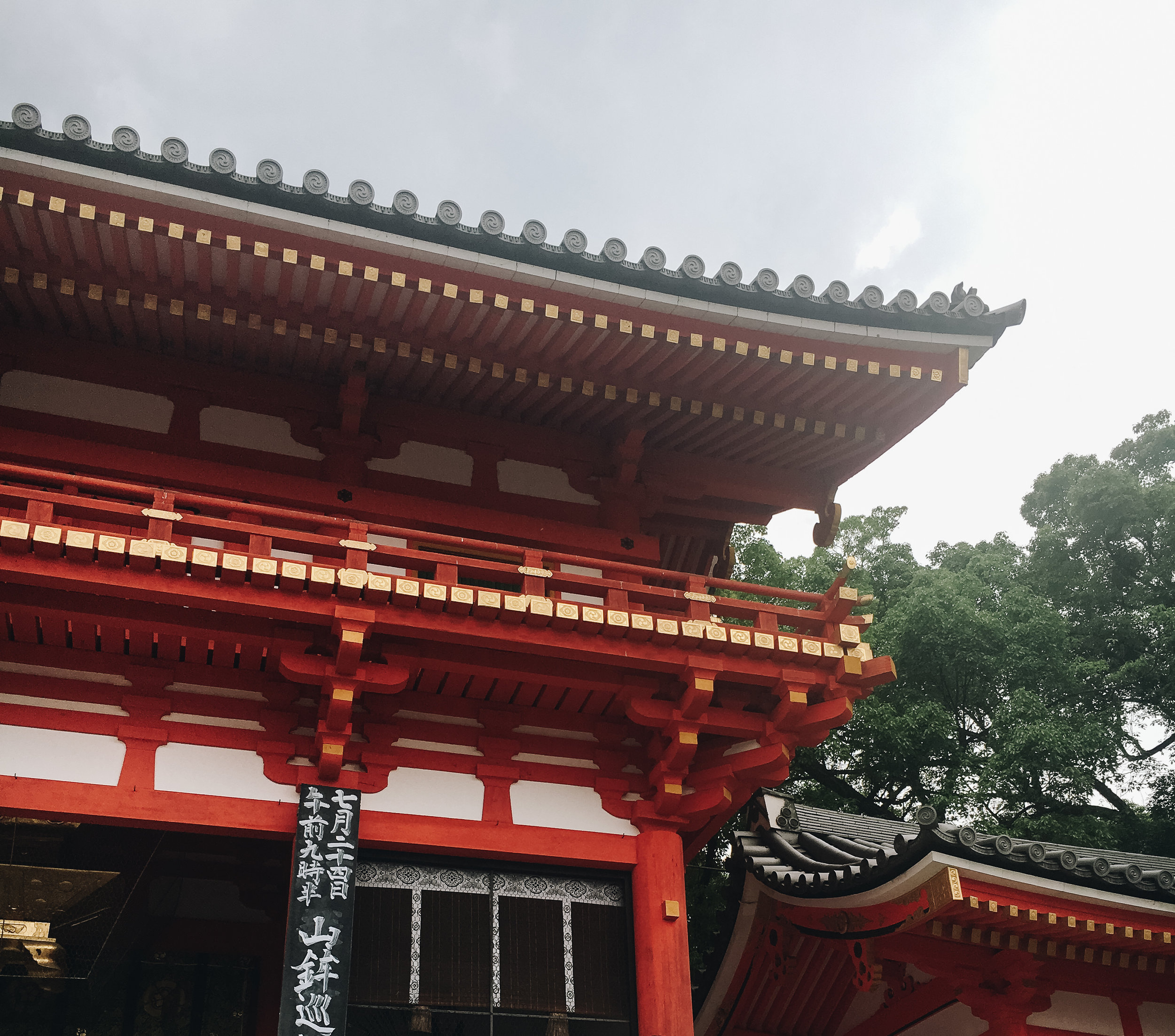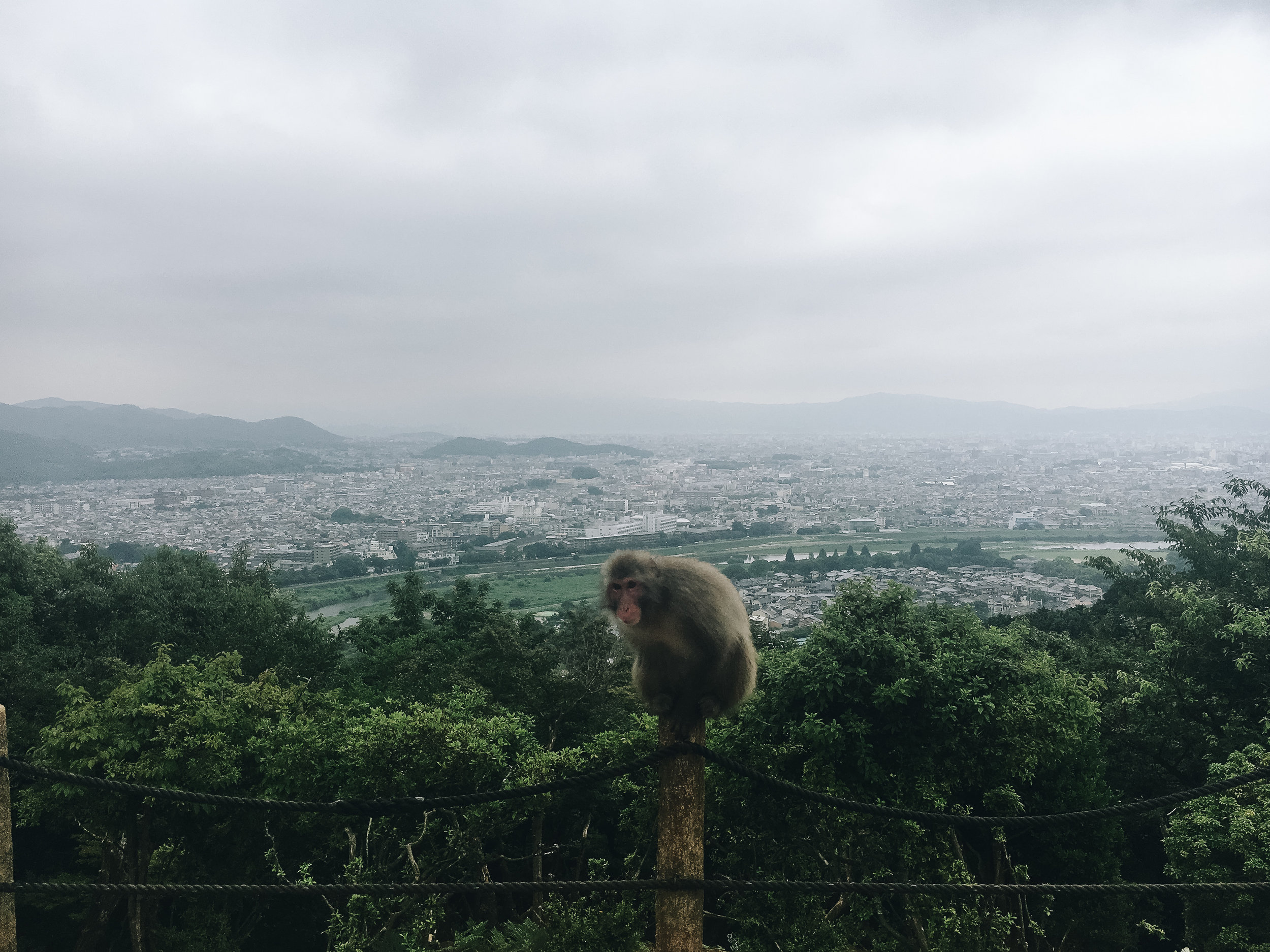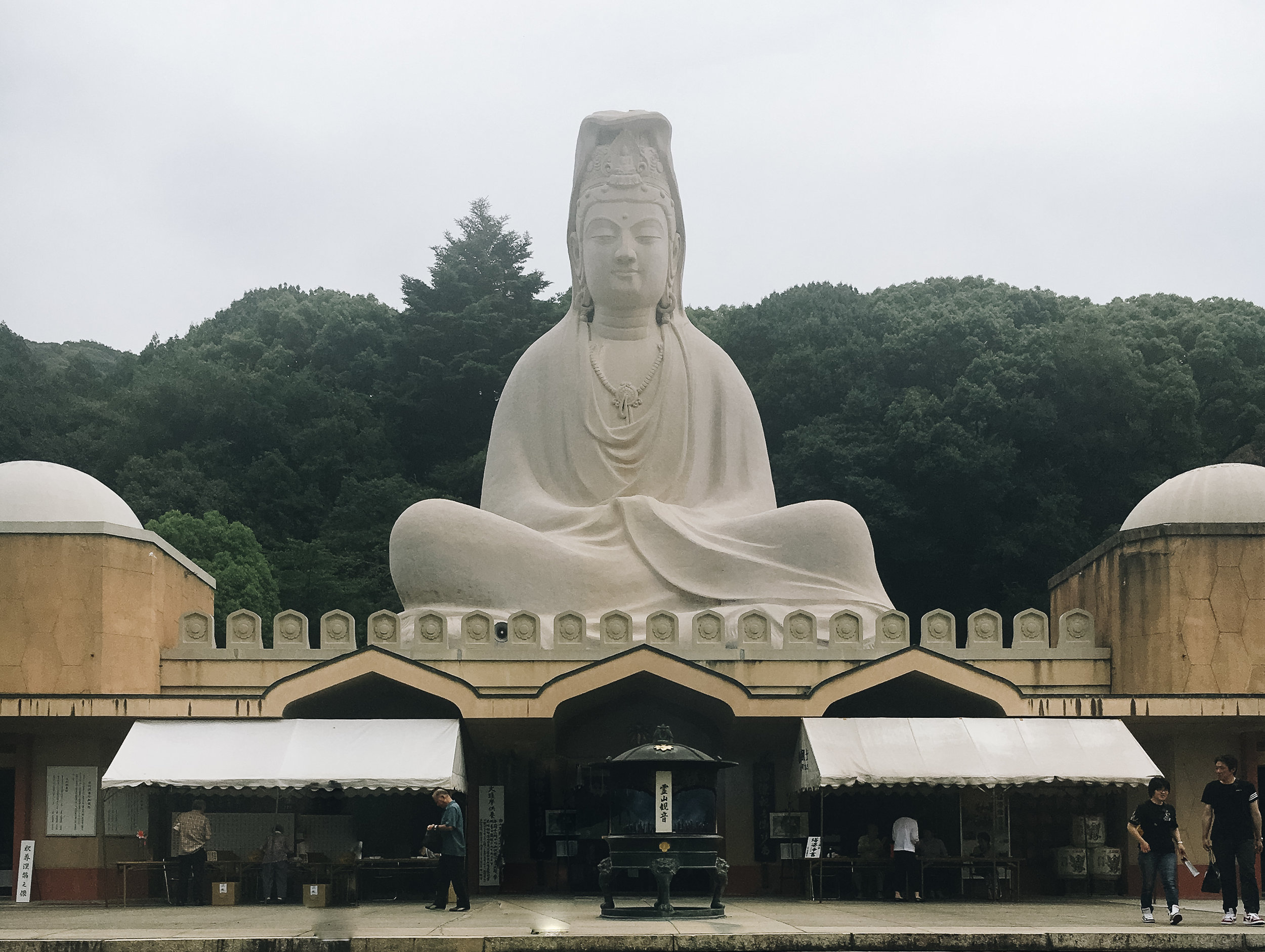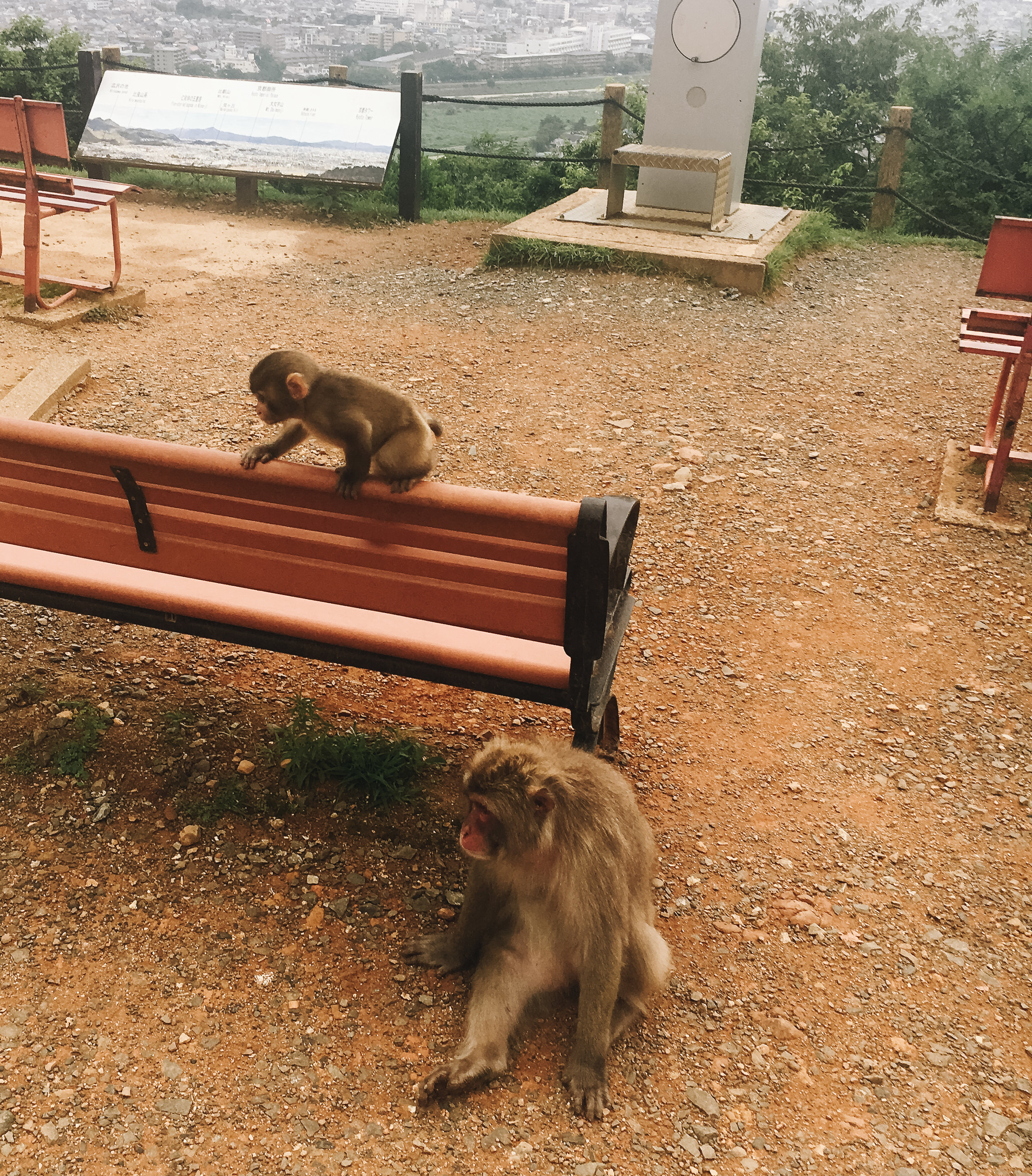Japan: Kyoto & Osaka – the authentic Japan
Despite falling in love with Tokyo the moment we arrived, we had to move on in order to see more of this beautiful country. We stayed in Japan for two and a half weeks and our plan was, of course, to see as much as possible. We went westward and intended to spend about 4 days in Kyoto and Osaka before heading on to Nagasaki and Hiroshima. Traveling Japan is really easy as they offer various options, including night busses, an excellent railway system (more on that and the Japan Rail Pass later) and so on.
Kyoto
From Tokyo, my friend and I took a night bus to Kyoto. That’s a very common and comfortable way to travel and a really nice experience. You can adjust the seats way better than in an airplane and they are actually nearly completely lie-flat seats, so you can sleep pretty well. We took the bus at around midnight or 1 AM and after a few hours we woke up in Kyoto.
After checking in and leaving our bags in the hostel, we immediately started walking around the city and exploring different parts. Of course, we started right away with visiting some temples, the most famous one being the Kiyomizu-Dera. Again, we loved the bright red colours, but what makes this place extraordinary is the beautiful view; this is when you start to get a feeling of how big Kyoto actually is. The area around the Kiyomizu-Dera is beautiful and what’s especially pretty is that here, Japanese people dress up in traditional Kimonos when traveling their own country. This definitely adds to the atmosphere. But of course, there are modern parts of Kyoto’s city – nearly 1.5 million people live there!
What we loved the most about Kyoto are its beautiful little streets with traditional Japanese houses (some still made out of paper walls) – especially in the Gion district; it is evident why it is sometimes referred to as the “old Japan”, as you still get a feeling on what Japan looked like many, many years ago. When it comes to geishas, we were incredibly lucky. It is very rare for people to see one of them, as they are living mostly hidden and only step outside for a few minutes a day and only when changing location. You’ll immediately realize when there’s a geisha around, as people start running and shouting, trying to get a picture. And just seconds later she’s gone …
Talking about geishas, I definitely have to tell you more about them, as the western countries tend to see them as prostitutes, when in reality, they are entertainers, who need to be perfect in singing and dancing and always need to behave in the most cultivated way possible. They undergo years of training (they start as children) and nowadays are present mostly during business meetings and they are there to make small talk and play instruments. Sometimes it is expected for them to flirt with someone, but everyone involved knows that’s all there is to it. I once saw a documentary about them and was surprised how different reality is from what we saw in movies.
We also visited the Ryozen Kannon – a beautiful buddhist temple with a big statue, which is different to the otherwise classic red temples we’ve seen all over Japan; the Arashiyama Bamboo Forest and the Monkey sanctuary close by. As the Bamboo Forest is a tourist-favourite it can get really crowded, so be sure to come early for good pictures.
Concerning the Monkey sanctuary i have to mention that normally I’m not a big fan of zoos or anything like that, but here it was different. We entered the area of the monkeys, where they ran completely free and it actually was not us who set the rules. There were people checking you don’t get closer to them than 1-2 metres and if you wanted to feed them, you had to enter a little house where you bought some apples and you were the one inside a cage, the monkeys were on the outside and grabbing something to eat if they wanted to. That was definitely something way better than the usual animal-in-cage-situation.
Osaka
From Kyoto we made a day-trip to Osaka, which is definitely something I can recommend. These cities, again, have excellent railway systems and so it doesn’t even take you an hour to get to one or the other. Honestly, Osaka was not the best day trip ever, but mostly because we were told only afterwards, it is better to visit the city at night. One thing you definitely shouldn’t miss is the Tsutenkaku. I’m sure you’ve seen pictures of that tower somewhere before, and it is definitely impressive to see it for real. But what’s way nicer is the area around it. It is filled with so much life and colour, but in a very different way than we saw in Tokyo. I guess that’s something you have to see for yourself to fully understand.
The funniest memory from my trip to Japan is from Osaka, when we went to a restaurant where the waiter spoke nearly no English and my friend tried to order some fried rice. The waiter didn’t understand what she meant and brought her rice and a raw egg. As he didn’t understand at all what she was trying to tell him over and over again; even when she tried to explain it by gesturing “egg fried rice” with her arms, she ended up walking into the kitchen and actually showing them what she meant by preparing her own food. Not the best memory, but definitely the most entertaining scene I have seen in these weeks. I guess you should really know the basics of Japanese when visiting the country. If not, however, you’ll have a funny time and something to laugh about instead.
In general, I have to highlight again how kind Japanese people are. When in Kyoto, we got lost trying to find the Arashiyama Bamboo forest and an old lady saw us and our desperate faces at the train station and immediately came running towards us trying to show us where we had to go, even if she, again, did not understand a single word of English.
Then, we took the famous Shinkansen to get to Nagasaki and Hiroshima, a very emotional but life-changing part of our trip. I’ll tell you more about that next week!
- Natascha



